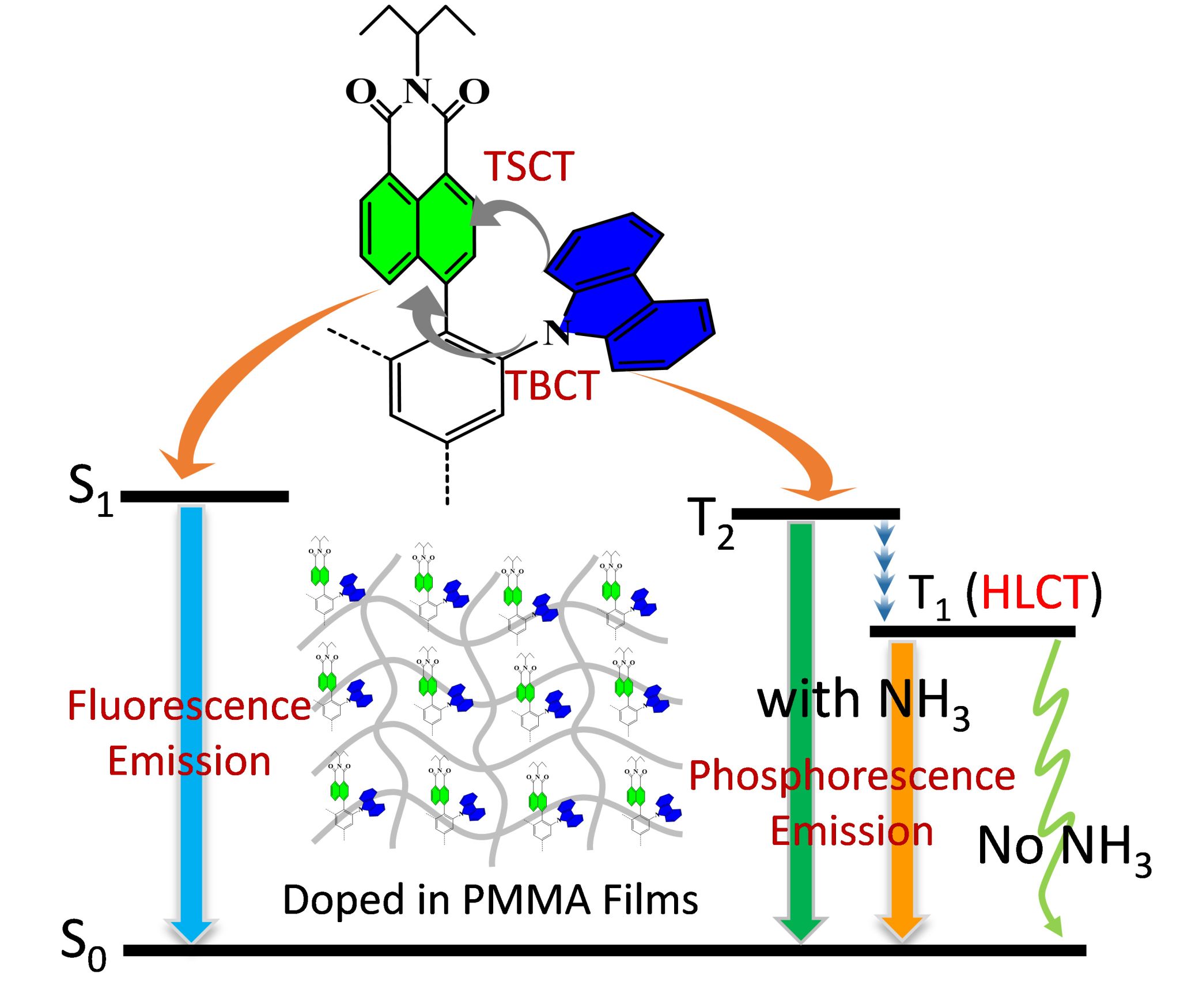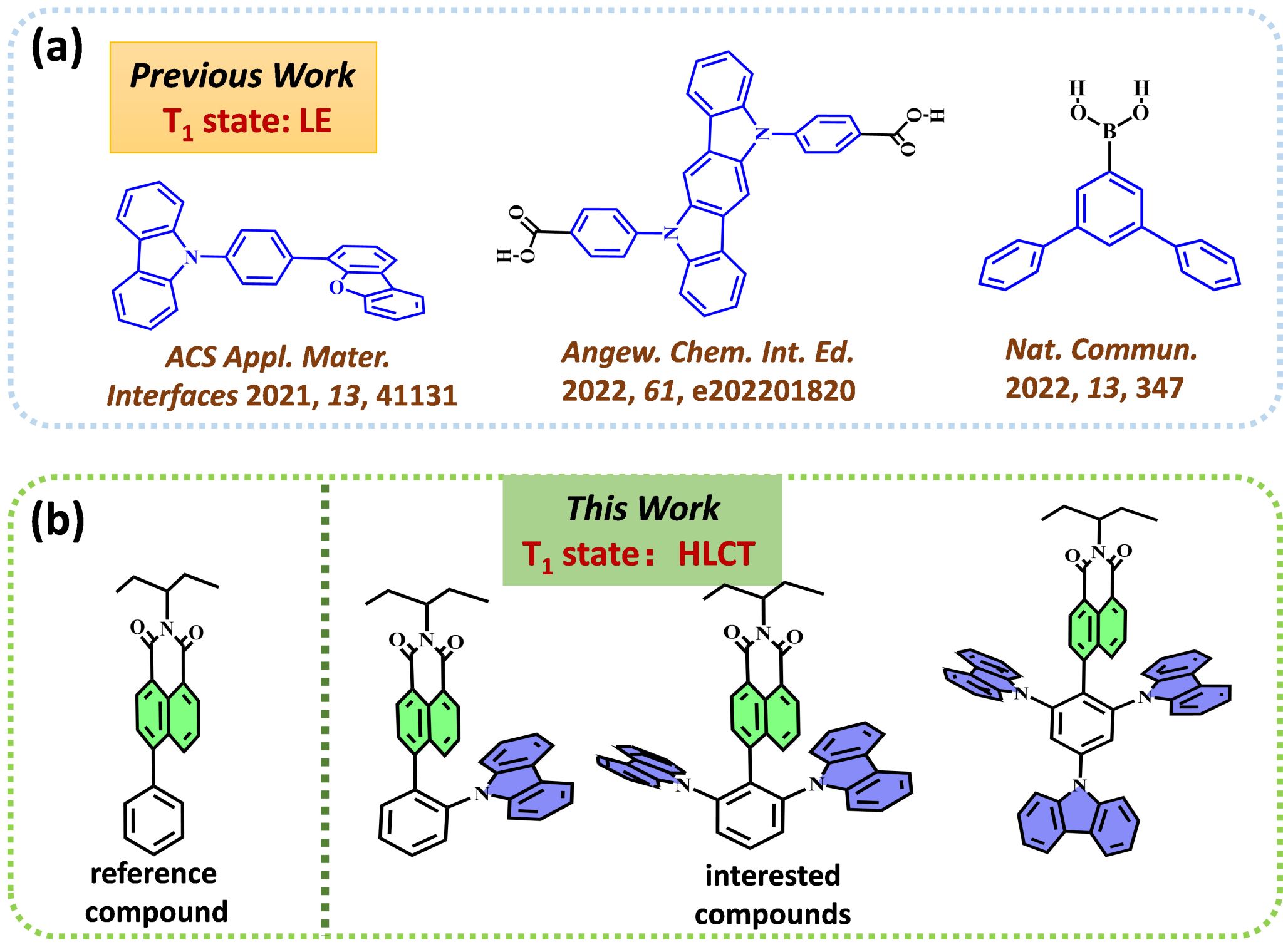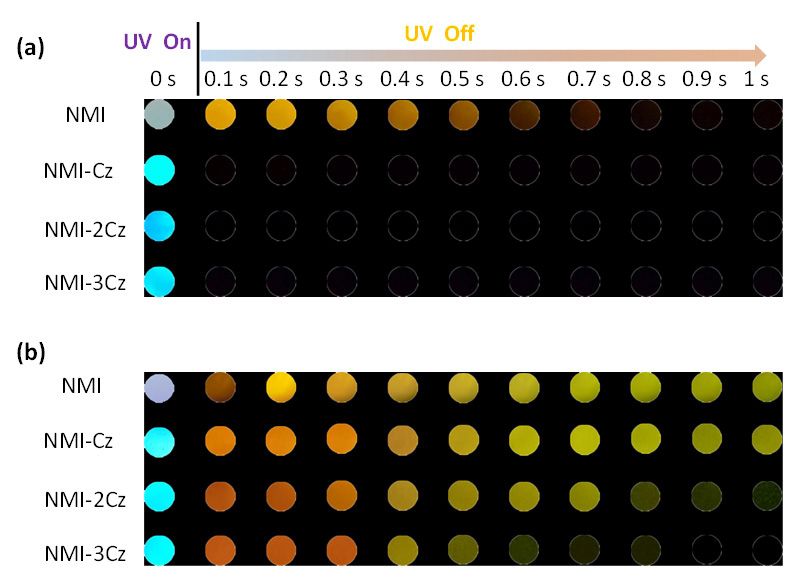
Qiyuan Shi, Nannan Ding, Zhaolong Wang, Xinyu Gou, Lingya Peng, Jiani Ma*, and Yu Fang*. J. Phys. Chem. Lett., 2024, 15, 2995-3001.

Organic room temperature phosphorescent materials have been widely used in various fields due to their prolonged lifetime and many other characteristics. In order to develop phosphorescent thin film materials with stimulus responsiveness and color-changing functions, an important strategy is to dope organic small molecules into polymer matrices to form thin films, which has the advantages of low cost and strong adjustability. Currently, most reported organic small molecule phosphorescent systems mainly use triplet local states as the luminescent centers, but their sensitivity to the microenvironment is poor, limiting their applications. Therefore, a more effective strategy is to introduce charge transfer states into the phosphorescent system to enhance its sensitivity to the microenvironment. However, achieving room temperature phosphorescent materials with stimulus responsiveness remains a challenge. To date, there are still relatively few research reports on room temperature phosphorescence with color-changing effects under external stimuli.

Figure 1. (a) Typical phosphorescence materials depicting 3LE and (b) designed phosphorescence materials featuring with 3HLCT, which are more sensitive to microenvironmental Perturbation.
In this context, we successfully synthesized three organic small molecules (NMI-Cz, NMI-2Cz, NMI-3Cz) by introducing carbazole fragments at the ortho and para position of the benzene ring of 4-phenyl-1,8-naphthalimide (NMI). Furthermore, it successfully introduced triplets with charge transfer properties. After doping the target compounds in PMMA and floating them in ammonia, the suppression of intramolecular vibration and rotation by polymer and ammonia molecules resulted in the observation of room temperature phosphorescence, with the phosphorescent color changing from orange-red to green over time. Theoretical calculations suggest that the orange phosphorescence is the intrinsic phosphorescent color of this molecular system, while the long-lived green phosphorescence originates from intermolecular charge transfer complexes formed between the target molecules and ammonia molecules. Research has shown that the introduction of carbazole endows the target molecule with charge transfer properties, thereby increasing its sensitivity to the microenvironment. Additionally, the increased quantity of carbazole enhances the charge transfer capability, leading to a shortened phosphorescence lifetime. This visible change in phosphorescent color achieves sensing of ammonia molecules and holds promise for the development film based phosphorescent sensors of ammonia.

Figure 2. Films of NMI, NMI-Cz, NMI-2Cz, and NMI-3Cz recorded upon switching a 365 nm lamp on and off (a) without ammonia and (b) floating in ammonia.
First Authors: Shi Qiyuan, master’s candidate, Ding Nannan, doctoral candidate, Shaanxi Normal University
Correspondence Authors: Prof. Fang Yu, Prof. Ma Jiani, Shaanxi Normal University
Full Text Link: https://pubs.acs.org/doi/10.1021/acs.jpclett.4c00359
 Latest Updates
Latest Updates






